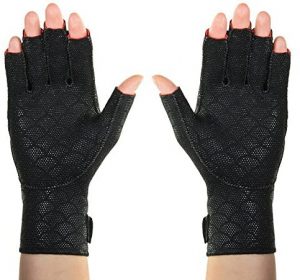Explore the Causes of Raynaud’s Disease

It seems that more often, Raynaud’s disease is more common in people living in colder climates and it is more common in women than men.
Sometimes this happens as part of a pattern observed with other diseases and conditions, in which case it’s referred to as secondary Raynaud’s or Raynaud’s phenomenon. However, when it happens alone without any signs of an underlying condition, it is called primary Raynaud’s or Raynaud’s disease (tends to be more serious and less common).
Signs and Symptoms of Raynaud’s Disease.

- Cold toes and Fingers – usually turning white at first, then may turn blue and feel numb as well.
- Numbness or pain (often like a stinging pain) when warming the area.
- Can be brought on by stress.
What causes Raynaud’s Disease?
The exact cause and mechanism behind Raynaud’s disease are still unclear. However, as far as common triggers, simply putting hands in cold water, entering a cold region or opening the freezer can set off the symptoms. Sometimes stress can also start an attack without a drop in temperature.
Some of the main causes of Raynaud’s disease include:
- Disease of the connective tissues
People suffering from scleroderma (hardened skin) tend to exhibit Raynaud’s disease. These symptoms are often linked to rheumatoid arthritis, Sjogren’s syndrome, and lupus. (Read more about how to manage Lupus naturally!)
- Diseases of the arteries
A build-up of plaque in the blood vessels (atherosclerosis) or inflammation of blood vessels in the hands and feet (Buerger’s syndrome) can cause Reynaud’s disease. Other diseases that have been linked to Raynaud’s disease include primary pulmonary hypertension (high blood pressure in the lungs) among other cardiovascular diseases.
- Carpal tunnel syndrome
This is a condition that involves pressure on major nerves to the hand (mainly the median nerve) producing pain and numbness in the affected limb. The affected hand becomes more susceptible to episodes of Raynaud’s and cold temperatures.
- Vibration or repetition
People who have jobs or hobbies that require repetitive movements or vibrations such as playing the piano/guitar and typing are at risk of developing Raynaud’s disease. People such as jackhammer operators are also at risk of developing the disease mainly because of the vibration movements they are often subjected to.
- Certain medications
Some drugs such a beta blockers (medication for treating high blood pressure), migraine medications that contain sumatriptan or ergotamine, ADHD medications, some contraceptive pills certain over-the-counter cold medications, drugs that cause narrowing of the blood vessels and some chemotherapy agents have been linked to Raynaud’s disease. Illegal drugs such as amphetamines and cocaine might also trigger Raynaud’s.
- Exposure to some substances
Smoking is a potential cause of Raynaud’s disease because it narrows blood vessels.
- Injuries
Raynaud’s phenomenon can start after injuries to the feet or hands such as local surgery, frostbite or broken wrist.
- Infections
Blood borne viral infections such as hepatitis B and hepatitis C can trigger Raynaud’s disease in some people.
- Cancer
Cancers that usually develop inside the bone marrow, blood, or immune systems such as lymphoma, acute lymphoblastic leukemia, and multiple myeloma have been linked to the Raynaud’s phenomenon.
On top of the factors listed above, Raynaud’s disease is more common in women than men, with an onset between the ages of 35 and 40 for secondary Raynaud’s disease and 15 to 25 for the primary form.
Moreover, it appears to run in families and people who have first-degree relatives with Raynaud’s disease are at risk of developing it. So if you find yourself experiencing any symptoms like numbness, or blue fingers or toes, perhaps it’s time to get yourself checked with your family physician.
Things your Doctor may Ask

- What do you do for work?
- What sort of recreation activities do you participate in?
- When did you first notice what symptoms you are experiencing?
- What were you doing at the time of the attack?
- What did you notice? changing color of toes, fingers – Pain or tingling?
- Do you know if there is anyone in your family that has previously been diagnosed?
- How much Coffee (Caffeine) do you drink?
- Are you a smoker?
- What (if any) other medical conditions do you have?
- What medications are you currently taking?
There are many Raynaud’s Disease sufferers that have found much relief from natural cures for Raynaud’s. Some of these include Ginko Biloba, Ginger root, and Rosemary.
You can read more about these natural remedies for Raynaud’s disease by clicking here!
Wishing you good health and well-being!



